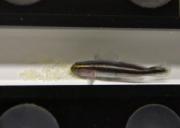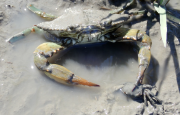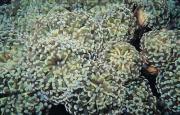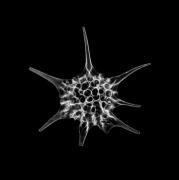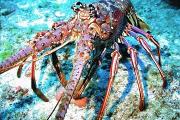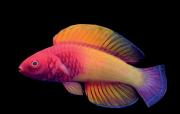They don’t have the same incredible sense of smell and ability to sense electrical activity of nearby prey that sharks have. They don’t have the phenomenal eyesight of mantis shrimps, which can see far more colors than humans can. And they don’t use echolocation like dolphins and whales. So what secret weapon do seals use to find their prey in the dark waters of the sea? The answer might tickle your fancy: it’s their whiskers!
Articles
The Marine Science Institute's monthly column, Science and the SeaTM, is an informative and entertaining article that explains many interesting features of the marine environment and the creatures that live there. Science and the SeaTM articles appear monthly in one of Texas' most widely read fishing magazines, Texas Saltwater Fishing, the Port Aransas South Jetty newspaper, the Flour Bluff News, and the Island Moon newspaper. Our article archive is available also on our website.
Many species of egg-laying animals decide when it’s time for their offspring to leave the nest, but a little fish known as the neon goby takes that a step further. They decide when their young will even hatch from their eggs. Leaving their eggs is a precarious time for any animal because the new hatchlings are at their most vulnerable. Typically, the timing of hatching depends on the embryo or on external environmental cues, such as temperature. But for neon gobies, fathers seem to know the best time to introduce their little ones to the world.
Great whites, makos, blue sharks—these are a handful of the shark species that migrate thousands of miles each year, but scientists have struggled to figure out how these sharks know how to get where they’re going. A study with more than a dozen juvenile bonnethead sharks has finally offered some answers. Sharks, like sea turtles, appear to use the Earth’s magnetic field to navigate the seas.
For years, scientists have believed that low tide provided fiddler crabs with a refuge from predatory blue crabs because the fiddlers could crawl around on the mud, out of the water where the danger lurked. But, new observations at a Virginia salt marsh suggest that blue crabs have a few surprises up their claws when it comes to hunting for dinner during low tide. Researchers watched as blue crabs hid out in shallow mud pits filled with sea water and waited, not for the tide to return, but for fiddler crabs to inch their way closer to the edge of the pit.
A key aspect of sexual attraction for many animals is the involvement of pheromones—chemicals secreted by an animal that other members of that species respond to. It’s no different for lampreys, an eel-shaped parasitic fish with a formidable suction-cup mouth. For these creatures, what attracts female lampreys to potential mates is the enticing smell of sperm. A compound called spermine is present in the semen of a wide range of animals, including humans, but scientists have only recently discovered that spermine is a strong aphrodisiac for female lampreys that are ready to mate.
Deep below the ocean’s surface, some corals emit an otherworldly glow called fluorescence, but for years, scientists have wondered about the purpose of these glowing colors. Among the hypotheses biologists have proposed is that fluorescence might optimize photosynthesis, shield against the sun’s radiation, protect plant-eating marine life that lives among the corals, or attract algae that live inside the coral and provide them with energy through photosynthesis. Now, researchers have come up with a different hypothesis: fluorescence attracts the plankton that corals capture and eat.
As ocean waters continue to warm along with the climate, scientists are trying to learn how thousands of different organisms will fare in the years to come. It turns out the Gulf of Mexico can offer clues, as researchers from the University of Texas at Austin are learning from a different global warming event that happened 56 million years ago. Back then, the earth experienced a spell of severe warming during an event called the Paleocene-Eocene Thermal Maximum, or PETM.
Many people have heard the cry “Save the whales,” but these massive creatures aren’t the only marine mammals at risk of disappearing. In fact, the smallest of the whales, the vaquita porpoise, is on the verge of extinction: just 10 individuals are estimated to remain in the world. Fortunately, those 10 appear healthy—as long as they can continue avoiding a specific fishing practice that continues illegally.
It feels like ages ago that the entire country buckled down at home for months, keeping distance from others to avoid catching COVID-19. While those months of self-isolation may have felt unnatural, humans aren’t the only species that uses social distancing to stop a virus from spreading through a population. Take, for example, the Caribbean spiny lobster. These lobsters are normally social, sharing dens because there’s safety in numbers when predators come along.
Scientists discover dozens of new fish every year. Most often the biologists who identify these species are from a handful of wealthier countries that have the resources needed to conduct extensive marine research. Now a gorgeous fish found in the Maldives sets two new precedents: it’s the first to be described by a local Maldivian researcher, and it’s the first organism whose scientific name is derived from the local Dhivehi language.


